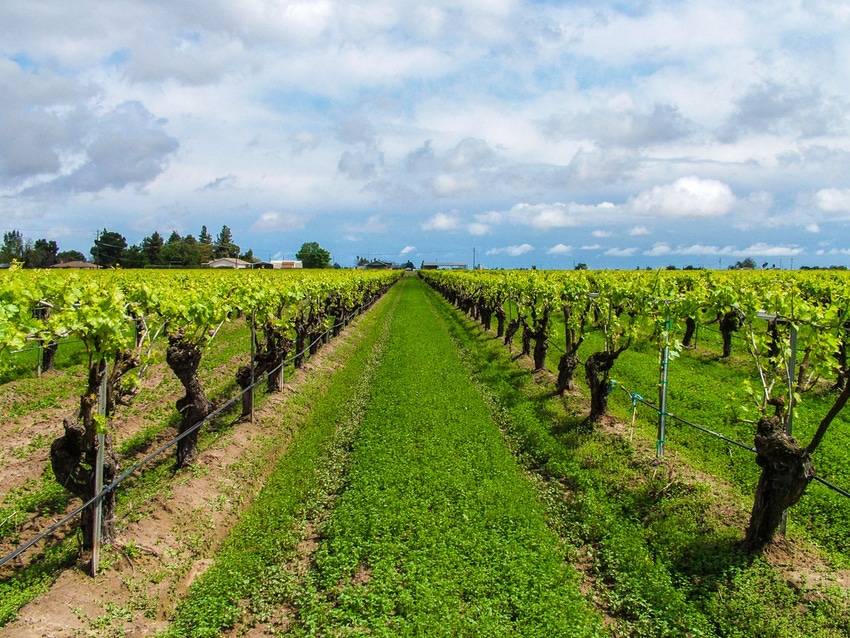
As summer temperatures start to soar and the number of Willamette spider mites in vineyards begin dropping, the population of Pacific spiders can take off.
Typically, the early-season Willamette spider mite begins appearing when the leaf buds open. It can be a problem in coastal areas and Sierra foothill. However, it seldom is a pest in the San Joaquin Valley, especially in Thompson Seedless vines.
The larger Pacific spider mite, on the other hand, is the main pest mite species in the San Joaquin Valley and may also be the primary pest mite in certain coastal grape-growing areas. It prefers the hotter, dryer part of the season
Of these two pest mites, the Pacific poses a bigger threat if populations develop, notes Glenn McGourty, University of California Cooperative Extension viticulture farm advisor for Lake and Mendocino Counties.
Whereas the Willamette mite stays closer to the cordon where it affects older leaves, the Pacific mite is found on the tips of shoots where newer leaves play a bigger role in producing sugar later in the season. As a result, unlike the Willamette mite, the Pacific mite can affect ripening of the grapes.
Dusty conditions, like where vines are close to unpaved roads, favor populations of both species, McGourty says. So do sandy, gravelly sites where drier soils may stress the vines.
“In our area last year, the Pacific mite pressure was a little higher than usual in some upland vineyards where the drought was full blown, and growers were unable to irrigate as much as normal,” he says.
However, dust from roads isn’t the only type of dust that encourages a buildup of mites. Sulfur dust kills beneficials, such as predatory mites, that feed on both Willamette and Pacific mites. That’s why he doesn’t advise relying solely on sulfur dust to control powdery mildew.
“We like to apply sulfur dust post-bloom until the weather gets hot,” McGourty says. “Here in Lake and Mendocino Counties that’s from late May until mid-July. It would be sooner in the Central Valley. When temperatures get above 95 degrees, sulfur is likely to burn foliage.”
Because mites live underneath leaves, which shield them from sprays, they can be difficult to control with sprays. He recommends growers who use miticides to apply them before the canopy gets big, which may hinder penetration of the spray through the foliage.
However, he reminds growers that, depending on the material and mite population levels, a miticide treatment may not be effective against the various stages of mites present in the population. So an additional treatment may be required. In time, that can lead to development of resistance to the material. It is important to understand optimum timing—usually earlier rather than later. Looking for predatory mites is also important, since they may already be present in many vineyards.
McGourty favors an integrated biocontrol program using natural enemies to limit numbers of both Willamette and Pacific mites. These beneficials include six-spotted thrips as well as several commercially available predatory mites, like Galendromus occidentalis.
Some growers have achieved good success with Galendromus occidentalis, he notes, adding “These predatory mites, released at the rate of 5,000 per acre and preferably in the spring, come on bean plants that are placed in the canopy,” he says. “These predators scatter quickly, hunting for the pest spider mites, and they reproduce pretty effectively.
More information on controlling spider mites is available at http://ipm.ucanr.edu
About the Author(s)
You May Also Like




